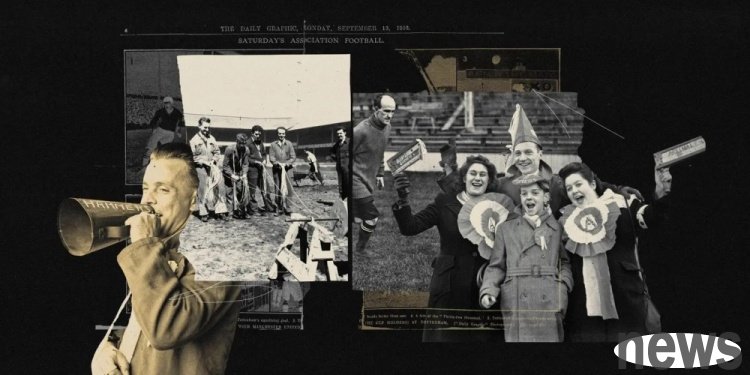
Origin stories are everywhere.
Each successful movie series seems to have at least one prequel to explain why the protagonist is what he is today - even if the reasons are sometimes far-fetched, for example, Kenneth Branagh actually arranged an origin story for Poirot's beard in the new version of "The Madness on the Nile".
Under this spirit, Nick Miller, the author of The Athletic, decided to tell the story of the founding of 20 Premier League teams in the 2025/26 season. The clubs have a variety of origins: churches, factories, local council decrees, cricket clubs, rugby clubs, and the "Bandy and Jenty Ball" club (a sport similar to hockey and hockey). More than one team is "reborn" from the ruins of the failed club, and many more are purely a group of young men who want to find something to do in winter.
These stories are full of fraudulent conspiracies, secret operations, Victorian pursuit of healthy life, cross-class cooperation, bar conversations, clubs set up because of a court but no team, self-proclaimed "the oldest team in the world", as well as teachers, Shakespeare, a man named Charles Daft, and some dogs.
This is what the clubs that built the richest and most intense football leagues in the world looked like.
Arsenal
In the origin story of today's Premier League clubs, Arsenal's version still leaves a few people resentment. They were originally called "Dell Square Football Club" and were founded by workers at the Royal Arsenal of Wolvech. The place now belongs to the suburbs of East London, but in the late 19th century it felt almost as far away from central London as Belgium. So a Conservative MP named Henry Norris saw the opportunity: He initially wanted to merge the team with Fulham, but eventually in 1913 he moved the team to a piece of land in Highbury, North London.
This relocation was strongly opposed, but Norris had a wide connection and his friendship with various powerful people helped him pass the test smoothly. Although Arsenal was still in the second level at that time and the first game disrupted his plan, the good news is: when the league restarted in 1919, the first-tier league plan expanded from 20 teams to 22 teams. Arsenal only won the second second in the second in the second division before the suspension and was not qualified to upgrade, but Norris once again convinced non-friendly decision makers with his connections, allowing Arsenal to successfully advance to the top league - by the way, it also squeezed Tottenham down, causing the opponent to relegate.
106 years have passed, and there are still people who are disappointed. In the 1919/20 season, Arsenal started his first league tour in Highbury, Aston Villa, most sports, especially team sports, are seasonal. So in half a year, you have to find something else to do in the other half a year. The gentlemen of the Adult Bible Class of the Wesley Church in the Vera Cross are facing this problem - they play cricket in the summer and think about playing rugby in the winter, but after a legendary conversation under a street light on Hursfield Road (about a mile from Vera Park today), they chose football. So in 1874, Aston Villa was born.
Scottish cloth merchant William McGregor moved to central England in 1870. Although he was not a founding member, he joined the club committee in 1877 and became chairman three years later. He can be said to be one of the most critical figures in the early organization of football in England. It was him who wrote to other clubs, suggesting that more competition frameworks be established outside the FA Cup. He wrote: "Every year, the football clubs with strong meetings and even arrange friendly matches is getting more and more difficult," so in 1888, the football league was established.
Bornemouth
football appeared in Bournemouth as early as the mid-1870s, mainly through Bournemouth FC and some factories and local gas companies' teams. In 1899, a group of people who were once related to the Boscomb St. John's Youth Academy gathered to establish the Boscomb FC, which was basically a youth team in the first five or six years. Their nickname "Cherry" comes from either a red jersey or a cherry orchard near the first stadium, and there are mixed statements.
They eventually advanced to adult football and joined the football league in 1923, and were renamed Bournemouth and Boscomb. The name was used until the early 1970s and was later changed to AFC Bournemouth. There are many different opinions on the reason for the name change: either to simplify the name, or to go up in the alphabetical list, or - as Kevin Nash wrote in the club history "The First Hundred Years of Bournemouth FC" - because Chairman Harold Walker and coach John Bond wanted a more "continental" feeling, and also changed the jersey to a Milan-style red and black stripes.
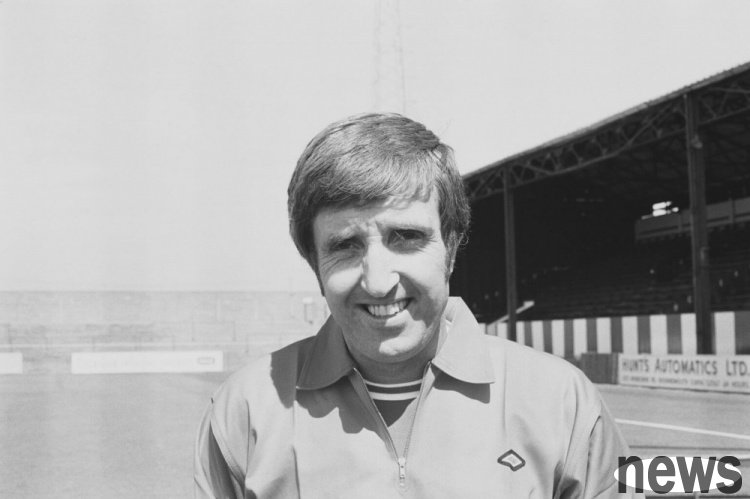
Bournemouth coach John Bond
Brentford
There is an old slogan about Brentford - now taken back by fans and written into the song - saying that they are just "a bus stop in Hounslow". Although it is not true, their roots are indeed related to public services. In 1889, the local parliament in West London opened a new leisure venue called St. Paul's Stadium, which remains in use today.
At a meeting between Oxford and Cambridge Bar (unfortunately demolished in the 1920s), Parliament decided that the venue should be accompanied by a sports club and voted 8-5 to decide that the club should play football rather than rugby.
However, two members of the local boating club Archer Green and John Stracan couldn't wait for the council to go through the process and formally approved the venue, so they promoted the establishment of the club on their own. So Brentford has never actually played on the field where they were born.
They moved to Geffen Park in 1904, and were awarded the nickname because the local newspaper mistakenly heard the fans shouting "bee", and they were stationed here until 2020.
Brighton
The late 19th and early 20th century, there were several different teams in the Brightonhof area.. Brighton United was dissolved after a few years of existence, and Brighton Hove Rangers were established from its ruins, but they also went bankrupt a year later and were investigated by the FA (the reason is no longer verified).
Then former United coach John Jackson decided to try again. In June 1901, a meeting was held at the seven-star bar, and according to the Brighton Hove Guardian, "a large number of winter pastime enthusiasts" were present. Brighton Hof United was formed, but another local club, Hof FC, opposed its name because "the United suffix will be seen as a merger with the professional team, which may seriously affect their attendance" (Tim Card and Roger Harris wrote in the club history "Seagulls!"). The name
was quickly changed to Brighton Hof Albion, and Hof FC was satisfied enough that it even agreed to share the court. Both teams were stationed at Golden Stone for several years before Hoff moved out and eventually disbanded. Albion stayed here until 1997, and finally moved to American Express in 2011. In 1997, Brighton fans looked for "souvenirs" after the last game of the Golden Stone Stadium
Burnley
The clubs on this list are branches of other sports institutions, usually cricket clubs, whose players need to stay in shape and have something to do in the winter. Burnley is slightly different. Burnley Rangers Rugby Club existed in the early 1870s, but by 1882 some members were dissatisfied: with football becoming increasingly popular, other clubs also appeared in the area, and they held meetings at the Bulls Hotel to vote whether to replace the oval with a ball. The
motion passed, and they removed the "Roamer" from the name to become Burnley FC, trying (and succeeded) to establish priority over other new clubs in the town. They were invited by the existing resident Burnley Cricket Club to move to Tefmore, both sports are still played on adjacent fields.
Burnley initially did not join the FA because he was a professional club (not allowed at the time), but they were one of the 12 founding members of the English Football League.
Chelsea
Usually the process is that the football team is first established and then find a place to play. But Chelsea is the opposite. At the turn of the 20th century, the brothers Joseph Mills and Gus Mills bought a piece of land originally belonging to the London Track and Field Club in West London, but did not want to retain its sporty purpose, which disappointed local businessman Frederick Parker.
Unknown history is here. The story says that Parker tried to convince him to keep the original purpose of the venue while helping Gus Mills walk the dog, and the dog suddenly bit Parker's leg. Parker, apparently undeterred, continued lobbying and moved Mills. The latter changed his mind and asked the legendary football field architect Archibald Leach to design a venue that can host football, track and field and cycling competitions.
The intention is to find a tenant later, and the intention is in nearby Fulham. But its boss Henry Norris (mentioned in the Arsenal part) was reluctant to pay £1,500 for annual rent, and instead hired Leach to renovate Craven Farm. So the Mills brothers decided to build their own club. On March 10, 1905, at the meeting at the Rising Sun Bar opposite Stamford Bridge, Chelsea FC was born. In the 1909/10 season, Chelsea's part at Stamford Bridge
Crystal Palace
was very interesting. For many years, the recognized version of the origin of Crystal Palace was: In 1905, a team that occasionally competed in the Crystal Palace Exhibition Hall turned professional and joined the Southern League. Although there was a team called Crystal Palace playing in 1861, the team had actually disbanded in the 1870s, and the new version was not a continuation.
However, a few years ago, the club and its historian Peter Manning said that new evidence showed that they could "claim to be associated with the old team", so the club now considers 1861 as the year of its founding. This is significant, as the world's oldest professional club, Notts County, was established in 1862, meaning Crystal Palace can now compete for this title.
However, this statement is still a bit untenable. There is indeed evidence that a team called Crystal Palace played its first match in March 1862, formed by cricketers from the same name (itself composed of employees of the Crystal Palace company that manages the exhibition center). But even Manning's research admits that the Crystal Palace football team was "dormant" in the late 19th century. Although he could barely pull the clues and claimed that it was related to the formal team formation in 1905, it was not entirely reliable to conclude that the same team was the same team.
Everton
This is a classic betting question, which is often used by people with a cunning face to cheat people: Who is Anfield's first home team?
is Everton, not Liverpool, but Anfield is not its first home court. Stanley Park (which separated the city’s two teams until this summer) opened in 1870, giving a group of youth at the Methodist Church of San Domingo several streets away the opportunity to breathe fresh air and engage in Victorian health activities. At first it was cricket, and in 1878 they added football.
The following year, they adopted their current name. The first club historian Thomas Kitts explained: "Because most of the club players are outsiders, they decided to change the name to the region name - Everton." In 1882, a court order was to expel them from Stanley Park and ruled that they must find a "closed venue" to play football. They finally chose a piece of land that the club chairman, John Hodding, found on Anfield Road, and played until 1892, until the rent dispute forced a new home. Those who stayed at Anfield to form a new club tried to retain Everton's name but failed: they became Liverpool, and Everton spent the 133 years after his stay at Goodison Park.
Fulham
Officially, the club that eventually became Fulham FC was established in 1879, when the worshipers of St Andrew's Church established the Football and Cricket Club that followed the church's name. But it was not until 1883 that there was actual evidence of the game. St Andrew's first real home court is on the Star Road near the church, called the "Milt Pond", because it was basically a wet grassland at that time.
They soon moved to their new home near Patney Bridge, when the club name was changed to Fulham St Andrew to avoid confusion with another club in London called St Andrew. In January 1889, the name was finally simplified to Fulham FC, and the club settled in a new stadium on the north bank of the Thames River. Craven Farm looks very different today, but one of its charms is that it is closer to its original appearance than most stadiums in the top league. The famous cottage at Fulham home gala, Leeds United, was founded in Leeds in the 1870s, and many clubs were established in the following decades, but none of them really persisted until the Leeds City AFC was established from the wreckage of its predecessor and settled on Elland Road south of the city center.
In 1912, they appointed great coach Herbert Chapman, but as soon as the game ended, the club was involved in a dispute scandal with player Charlie Copeland. Copeland believed the club had promised him a post-war raise, so when it failed to deliver on it in 1919, he reported to the Football League and the FA a series of "off-book" payments to other players by the club.
Although such incidents were technical violations at that time, they were not uncommon. It doesn't have to be a catastrophic survival problem for Leeds. But somehow, when the league and the FA Joint Committee requested a record, they chose to refuse. Dave Tomlinson wrote in Leeds United: History: "If the team obeys the committee's requirements, it is likely to be leniency, just like other clubs that admit their mistakes." As a result, the committee punished the team hard and announced that it would be expelled from the football league and disbanded. Several officials, including Chapman, were banned and players were auctioned.
Shortly after, a group of former ZZC directors and players formed a new club and took over Elland Road. In October 1919, Leeds United was invited to join the Central League.
Liverpool
The most successful and romantic club in England football was born due to a rent dispute, which felt a bit weird. Everton was a founding member of the Football League in 1888, at that time at Anfield. Its chairman is John Hodding, a Conservative politician, but more importantly - he owns the venue.
After Everton won the first league title in 1891, Hodding raised Anfield rent, sparked dissatisfaction from members and quickly kicked Hodding out, crossed Stanley Park, and camped at Melgreen Stadium (now known as Goodison Park).
Hoding (winemaker origin) blames the dispute on the "prohibition fanatic" rather than the rent issue (according to John Williams' "Red Rebirth". He tried to form a new limited company called Everton and retain the club registration, but none of them succeeded and had to rename the company "Liverpool Football Club and Sports Fields Co., Ltd."
He retained key figures including coach William Barclays, initially played in Lancashire League and entered the Football League Class B in 1893. Under Tom Watson, they won the first of 20 league titles in 1901. It was difficult enough to determine the earliest precise details of most football clubs (because most of them were in the 1800s), but it was especially so, partly because a fire in 1920 destroyed a large amount of documentary material. What we know is that a team representing St. Mark's Church in West Gorton (southeast of Manchester city center) played for the first time in November 1880, against a Baptist Church team in McClersfield.
Football is one of a series of activities introduced to prevent social chaos in the region (dangled by high unemployment and poverty): in cricket, rugby and "workers' rally", football persisted. In the following years, the club changed its name several times, changed it to Gorton Association FC and then changed it to Adwick, until it finally became Manchester City in 1894.
This is both a name change and a brand reshaping, driven by then-head coach Joshua Palby to match Manchester's urban development. The club was officially established and synchronized with the opening of the Manchester Ship Canal. Club historian Gary James wrote in "The Years of Manchester" that Palby "want a club that can control the pride of Manchester in 1894." Manchester City is on Maine Road, home from 1923 to 2003, Manchester United would probably no longer exist today.
Anyway, this is the story. In 1878, the Newton Heath Carriage Factory of Lancashire and Yorkshire Railways decided to engage in healthier activities than drinking and satisfying carnal sensuality. So they were encouraged to set up football and cricket clubs: Newton Heath grew up and joined the football league in 1892, but the financial clouds had already gathered.
The club continued to raise money for the next ten years, and even used captain Harry Stafford's dog major to raise donations. During a fundraising in 1901, the major worked with a donation jar: Alas, the hound was lost, and the story was finally found in a bar run by John Henry Davis (a wealthy man).
When Stafford came to pick up the Major, he talked to Davis and convinced him to invest in the club. Davis invested his emotions and money, and the following year he took over completely: he decided to change his name, and after discussing the Manchester Celtics and Manchester Central, he was eventually designated as Manchester United.
Newcastle United
"Union" is a common suffix for English football: 11 teams currently use it in the first four leagues, but there are few reasons like Newcastle. Club Today can be traced back to several clubs established in the 1880s, as early as the official day of Newcastle United in 1892.
In 1881, a group of players from Byker (outside Newcastle city center) formed a football team. After expanding to other areas of the city's east, it merged with another local club, Rosewood, in 1882 and renamed Newcastle East.
On the other side of the town, there is a club called Newcastle West. It moved to the site of St. James' Park in 1886, but it fell into a financial crisis in 1892 - a relatively small city could not maintain two professional football clubs.. After the West End was disbanded, the East End took over its St James Park lease and some of its players, and renamed it to Newcastle United after the merger of the two major clubs in the city.
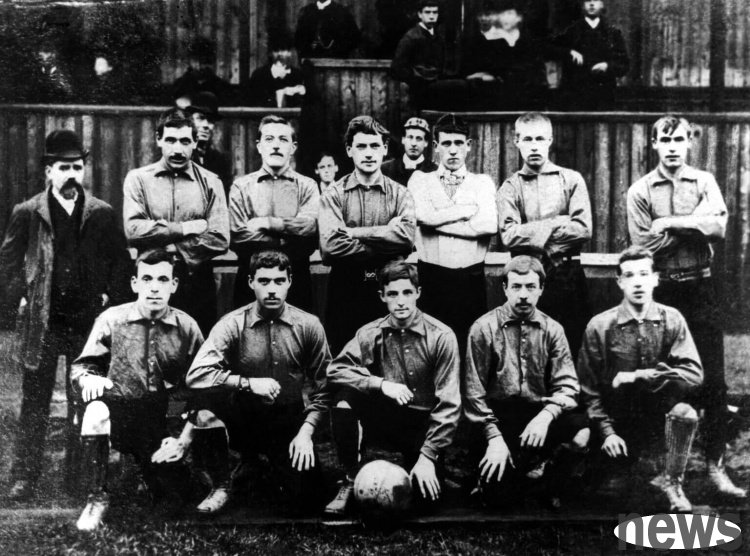
Newcastle "Union" in 1893, nottingham Forest football was not the primary focus of the clubs that eventually became Nottingham Forest. The initial club was a group of Bandy and Jenty players (a original version of hockey, one on the ice and one on the grass), but in 1865 they gathered at Clinton Arms in Nottingham to form a team to play relatively novel football.
Their first home court was the forest leisure area (a piece of land still today north of the city center), which was allocated by government laws to sports and various venues for activities.这是他们独特名称的来源。
There were founded a few years ago, and the two clubs had intersections: at least three of Clinton Arms' 15 people - Jason Scrimshaw, Walter Linbury and the gorgeously named Charles Daft - were related to Notts County.
Matthew Aldroyd in recent club history The Trail Blazers suggested that they were founded in part because of the recognition that the need for a rival to Notts County, but especially because Scrimshaw "does not possess the upper class status of the Notts member and may feel uncomfortable with Notts's idea that football is strictly a sport at the highest level of society". In the second half of the 19th century, football was promoted by the Scots in many towns in northern England. Sunderland is like this: In 1877, a principal from Al, James Allen, served on the Henden Board School.
Two years later, Allen formed a team of colleagues called Sunderland and the Regional Teachers Association Football Club. As James Hilton wrote in "Wellside to Wembley", "It is not a gilding business. No capital injection. No master plan. The club's first meeting was held in the classroom; the first jersey was self-financing; the first batch of players was almost all teachers." The team expanded and quickly simplified the name of Sunderland AFC to attract non-teachers, but professionalization was too much for Allen, and he formed his own short-lived team, Sunderland Albion. Sunderland initially wore a blue shirt, but later changed to half red and white, and in 1887, he changed to red and white stripes. A few years later they moved from the original home of Sunderland Newcastle Road to Rock Park.
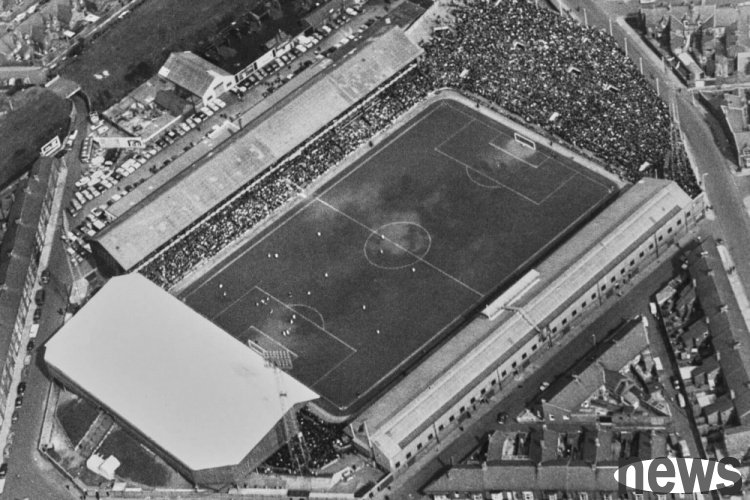
former home court of Sunderland Rock Park (1966)
Tottenham Hotspur
Tottenham Hotspur is one of the great suffixes in the football world, not only because of its uniqueness, but also because of whether there are other football club names inspired by Shakespeare? Tottenham today originated from a cricket club, and its home location was once belonged to the Percy family (ancient nobility). One of them, Sir Henry Percy, was nicknamed "Harry Hotspur" by Scottish soldiers for their bravery. He embodies this in his resistance to Henry V and is immortalized by Shakespeare's play of the same name, but unfortunately, the tragic ending in the Battle of Shrewsbury in 1403.
Therefore, the club was originally called Tottenham Cricket Club. When a group of guys wonder what to do in winter, the story says they stopped under a gas light on the current Tottenham High Road (about 100 yards from the current home court) to decide football.
Julie Walsh wrote in "The Biography of Tottenham": "It takes 6p to join the team. The boys collected their first membership fee on September 5, 1882. This day was recognized as the day of the establishment of Tottenham Football Club."
The guys considered calling the branch club Northumberland Wanderers, but finally decided on a variant of the name of the cricket club, and then added Tottenham to avoid confusion with West London club Tottenham (because the two teams always received emails).
West Ham United
Football is often used by the richer social classes to connect with the working class, and West Ham United was born. In the summer of 1895, Arnold Hills, who had just inherited his father, Thames Ironworks and Shipbuilding Company in East London, searched for his common ground with his employees.
He worked as a football captain at Harrow School, so he paid for it, and a foreman named Dave Taylor gathered workers and set up Thames Ironworkers FC to settle in a venue on Hermit Road (about more than a mile from later Upton Park).
By 1898, the team had been selected to the Southern League seriously. To be more competitive, they began to recruit professional players, annoyed Hills. He regards the team as amateur business and while temporarily tolerating more professionalism, as West Ham historian Brian Belton wrote, he “no longer believes that team activities make sense to their employees or companies.” The
part was to raise money, and the club became an independent limited company, so it could no longer be associated with Iron Industry Company: Therefore, the club was officially liquidated in 1900 and was reorganized shortly afterwards into West Ham United. At this time, they adopted new burgundy and blue. According to Belton, some members bet with some Aston Villa players to win, and the other party had no money to give it, so they gave it some jerseys.
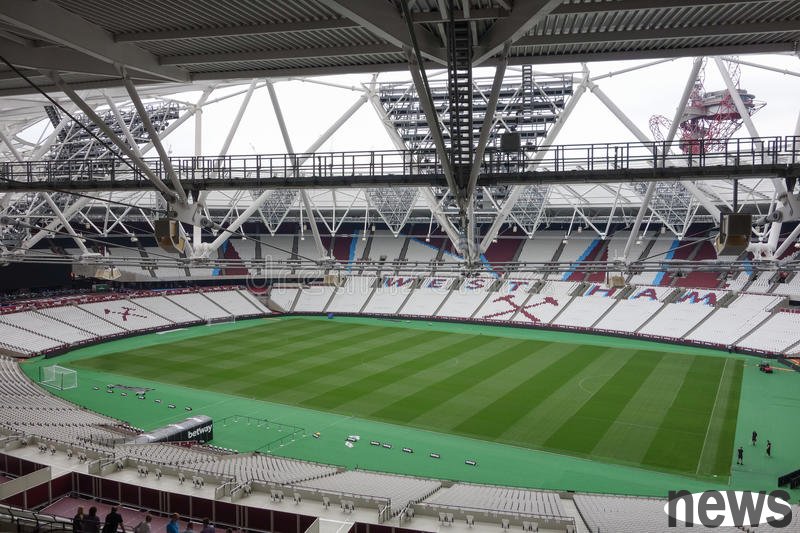
Wolves
Wolves
Wolves were born in 1877 when two students of St. Luke's School in nearby Methodist Church formed a team named after the church and the school. Brody and Bainton seek financial help from local businessmen and sports enthusiast Alfred Hickman, and eventually St. Luke and Hickman merged with the cricket club (called Wanderers) that St. Luke played for.
has a bit reluctant change, but as Patrick Quick wrote in "Origin of Wolves", cricketers have the upper hand. "Brody himself wrote that the footballers adopted the name of 'Roamers' when the merger was carried out because the latter insisted... the cricketers 'resolutely believed that since we go to their venue, the benefits were more in us'."
Shortly after adding the name of the town, Wolverhampton Wanderers became a founding member of the Football League in 1888. They reached the FA Cup final in 1889, and the reputation brought by this achievement made them an ideal candidate for staying in the newly available venue Molino.他们从此扎根于此。